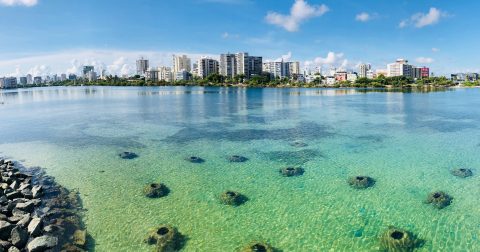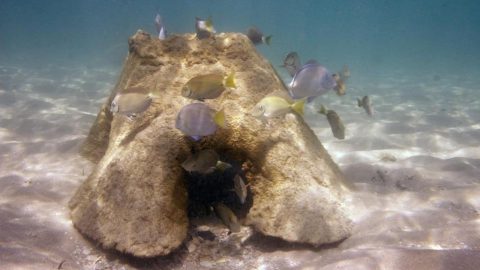Laguna del Condado Artificial Reefs Project
Have you seen this image when visiting Laguna del Condado?
Coral communities and their habitats are mainly located on the ocean shore of the San Juan Bay and of Laguna del Condado– the lagoon with the largest aquatic biodiversity in the estuary system.
To improve aquatic communities, the Estuario de la Bahía de San Juan Program placed 45 coral modules of artificial reefs at the bottom of the Laguna del Condado. These modules, known as “Taíno Reefs,” imitate coral reefs in order to create new habitats at the bottom of the ocean. Each module has multiple entrances for fish.
The exterior surface provides a foundation for the development of corals. Once installed, the ecological response was surprising. Six months after the installation, we saw the first coral colonies growing. After nine months, the amount and diversity of fish increased. 176 new individuals from 35 different species were confirmed that did not exist before the artificial reefs were installed. Moreover, we observed a whole community interacting: fish fed on seaweed that grew on the surface of the modules, and others took refuge in them. We also observed some predators, like the pompano and the barracuda, while they captured their prey. Today, more than 1,200 coral colonies grow over the module’s coral structures.
The core purpose of this project was to create habitats to increase marine biodiversity and stimulate coral growth. This type of project is known as blue infrastructure. In addition, these artificial reefs form an underwater interpretive trail. With the right equipment, people can observe fish, coral, and other marine life in their natural environment. This way we also increased the level of knowledge and appreciation towards the conservation of the marine world.
Today you can enjoy the beauty and submarine wealth of the Laguna del Condado, thanks in great part to its designation as an Estuarine Natural Reserve and the restoration efforts of coral reefs, red mangrove, water quality monitoring, subaquatic cleaning, and projects for the enjoyment of the public like the Cinema at the Estuary Lagoon.
We invite you to visit this interpretative path and we ask that you do not touch or lean on the modules so they can continue being a home to aquatic life. We appreciate it when you spread the word and continue supporting the restoration efforts of the estuary.




